Abstract
A computer system for the assistance of syndrome diagnosis in dysmorphology (EL BUSCA) was developed, and used to test the mechanics of the diagnostic process. EL BUSCA has a reference file (REF) with 200 syndromes, expressed in 175 signals. Signals have a weight value resulting from the difference between the number of syndromes including that sign and the total number of syndromes in the REF. A mean signal weight was calculated for each syndrome. The system was tested with 200 published cases (CASES), representing 82 different syndromes. Each consultation (CONS) entered up to 15 patient signals. The system then selected syndromes having three or more of those signals. 'Present' (REF+CASE), 'Absent' (REF only), and 'Additional' (CASE only) signals, as well as the score given by the sum of the weights of 'present' signals, were displayed for each suggested diagnosis. A consultation was successful (positive answer) if the correct diagnosis appeared among the first 12 ranked. EL BUSCA gave a positive answer in 82% of the 200 test consultations. Linear regression, with ranking of the correct diagnosis among the answers as the dependent variable, was used for the analysis of the following results. For the REF, no relationship was found for either the number or the mean weight of the signals with the ranking of the correct diagnosis. For the CASES, there was a linear relationship between the number of signals of each consultation and the ranking of the correct diagnosis, indicating that the larger the number of signals consulted, the lower the ranking of the correct diagnosis. No effect was seen for the mean weight of consulted signals.(ABSTRACT TRUNCATED AT 250 WORDS)
Full text
PDF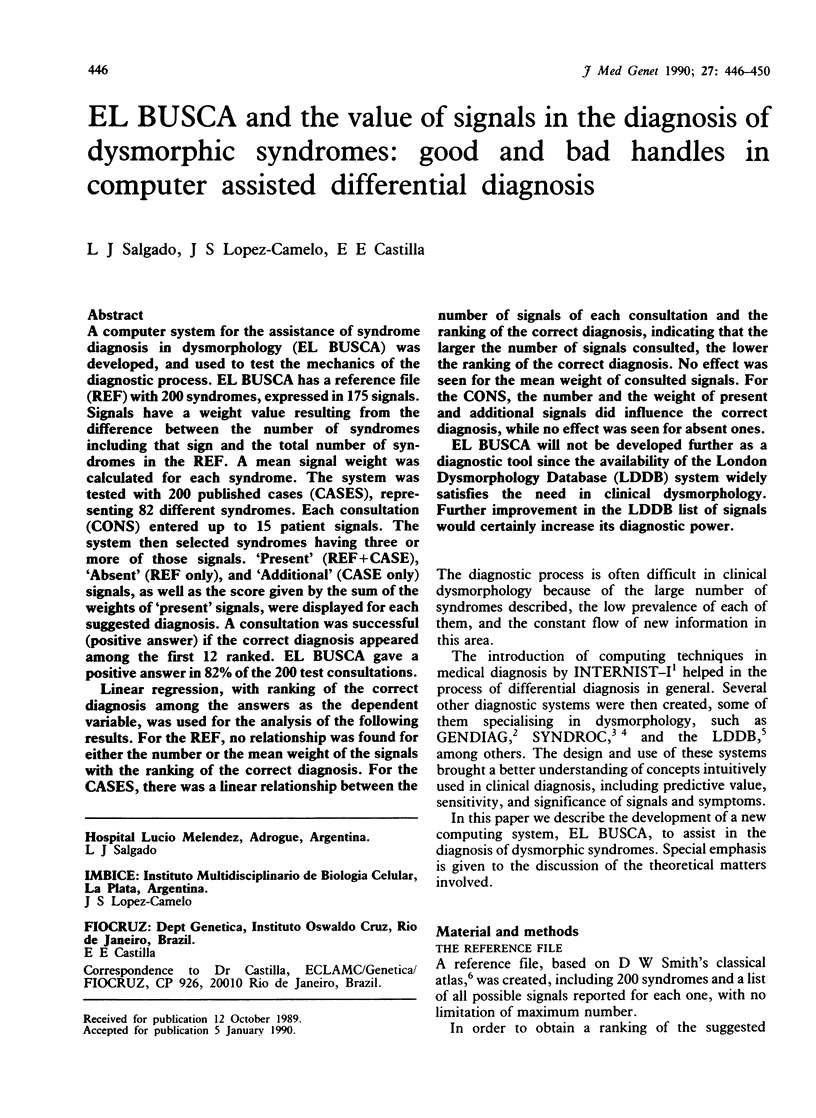
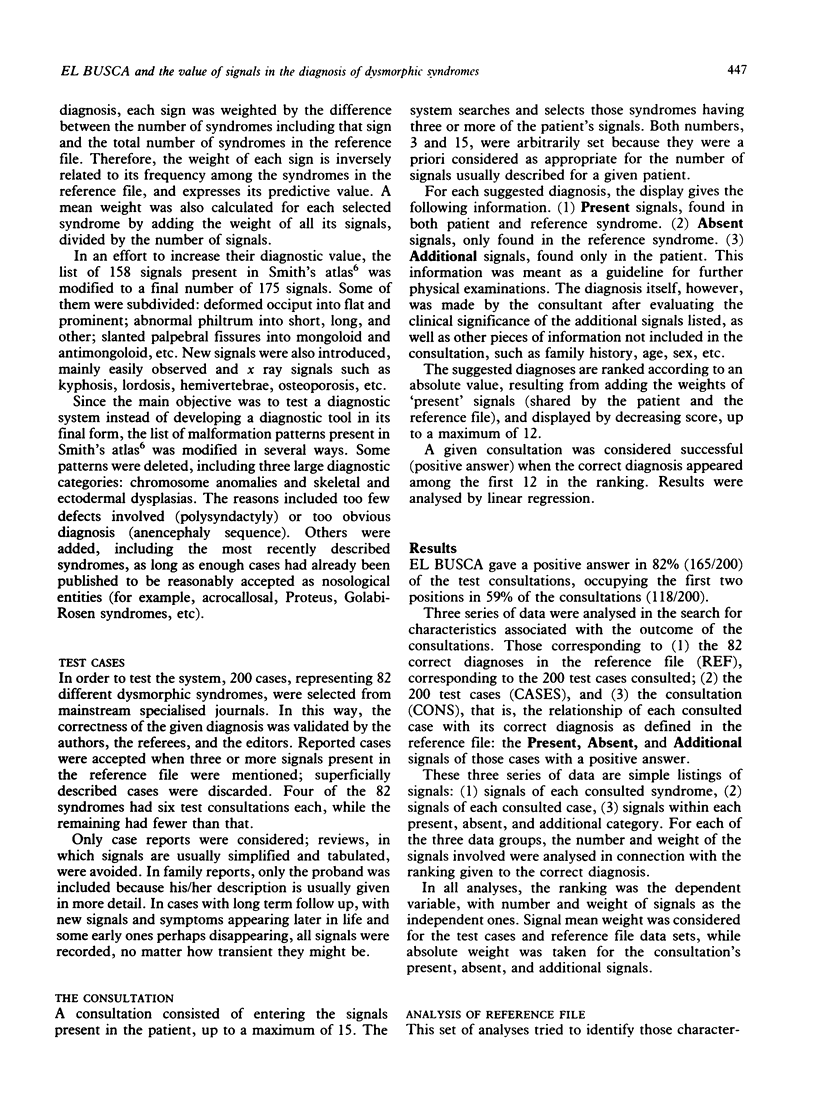
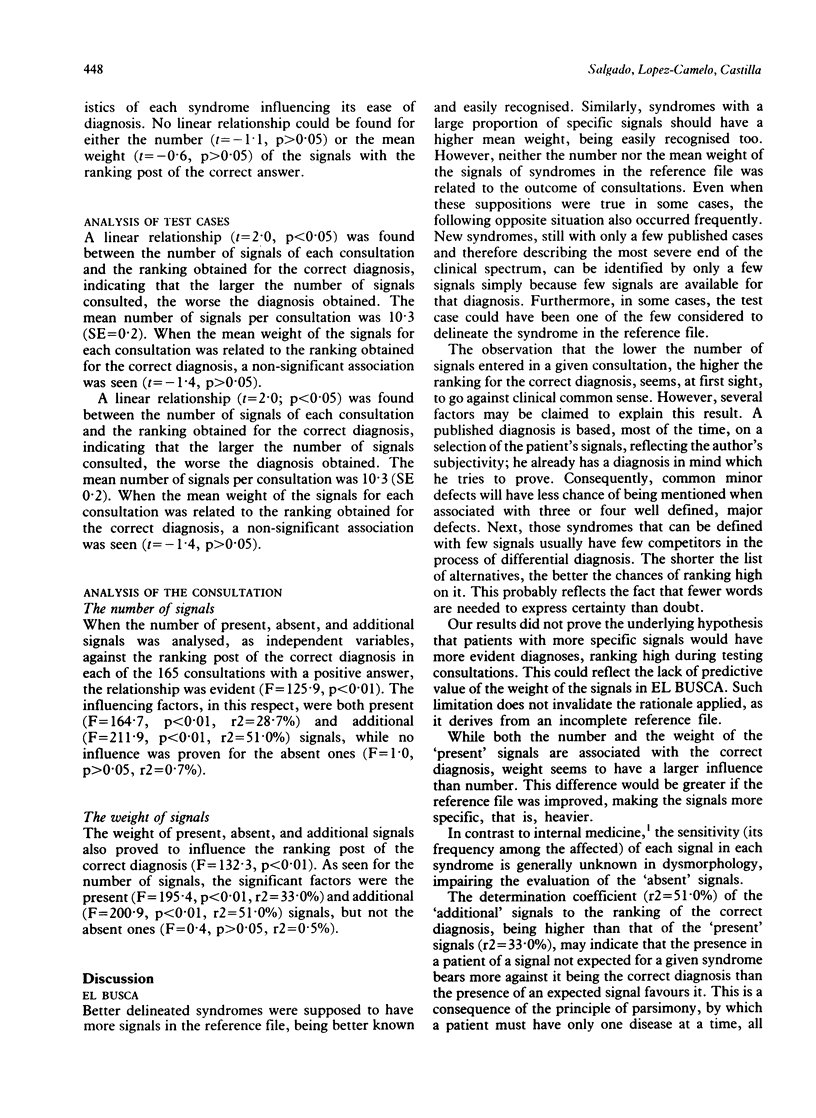
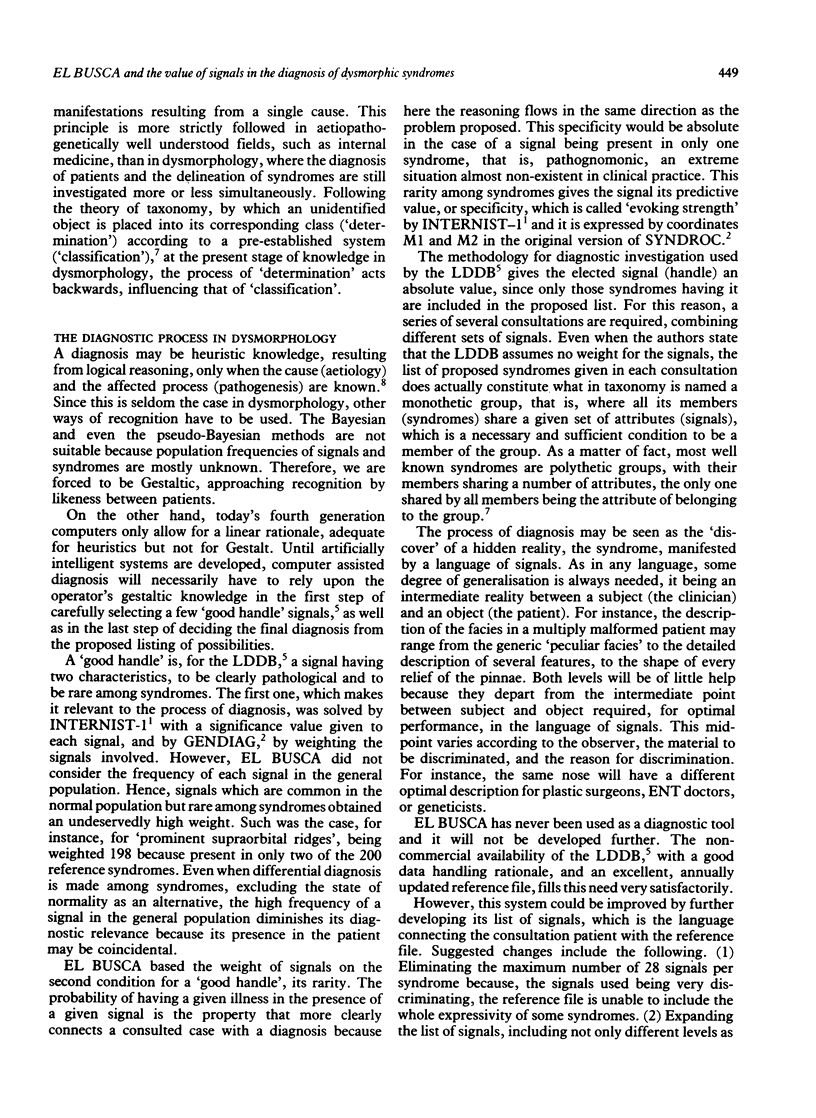
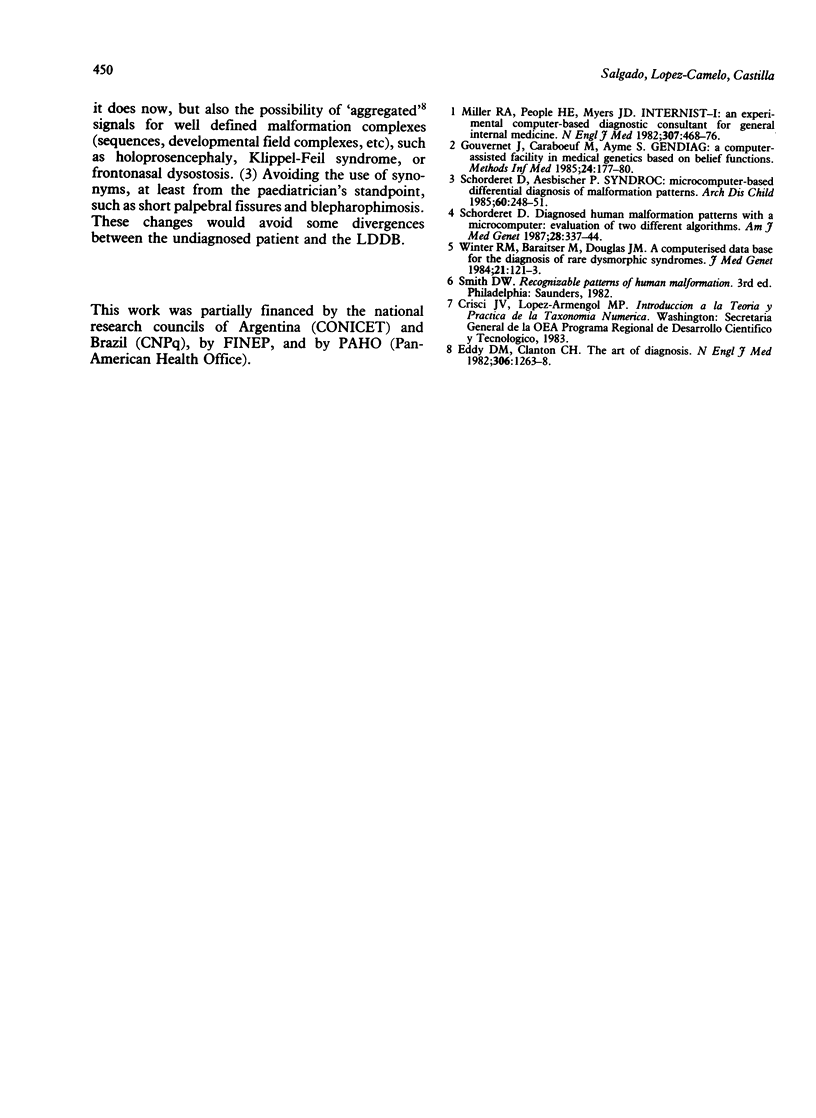
Selected References
These references are in PubMed. This may not be the complete list of references from this article.
- Eddy D. M., Clanton C. H. The art of diagnosis: solving the clinicopathological exercise. N Engl J Med. 1982 May 27;306(21):1263–1268. doi: 10.1056/NEJM198205273062104. [DOI] [PubMed] [Google Scholar]
- Gouvernet J., Caraboeuf M., Ayme S. GENDIAG: a computer-assisted facility in medical genetics based on belief functions. Methods Inf Med. 1985 Oct;24(4):177–180. [PubMed] [Google Scholar]
- Miller R. A., Pople H. E., Jr, Myers J. D. Internist-1, an experimental computer-based diagnostic consultant for general internal medicine. N Engl J Med. 1982 Aug 19;307(8):468–476. doi: 10.1056/NEJM198208193070803. [DOI] [PubMed] [Google Scholar]
- Schorderet D. F. Diagnosing human malformation patterns with a microcomputer: evaluation of two different algorithms. Am J Med Genet. 1987 Oct;28(2):337–344. doi: 10.1002/ajmg.1320280211. [DOI] [PubMed] [Google Scholar]
- Schorderet D., Aebischer P. SYNDROC: microcomputer based differential diagnosis of malformation patterns. Arch Dis Child. 1985 Mar;60(3):248–251. doi: 10.1136/adc.60.3.248. [DOI] [PMC free article] [PubMed] [Google Scholar]
- Winter R. M., Baraitser M., Douglas J. M. A computerised data base for the diagnosis of rare dysmorphic syndromes. J Med Genet. 1984 Apr;21(2):121–123. doi: 10.1136/jmg.21.2.121. [DOI] [PMC free article] [PubMed] [Google Scholar]


